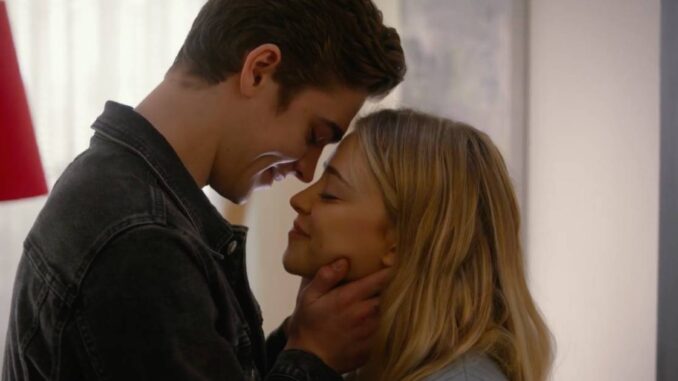
The final curtain is a peculiar thing in the world of storytelling. It carries the weight of culmination, the pang of farewell, and the quiet satisfaction of a journey completed. For fans of the After series, "After Everything" was not just another installment; it was the whispered promise of resolution, the last dance for Hardin and Tessa. But beneath the polished surface of the silver screen, behind the dramatic swells of the soundtrack, lay a labyrinth of human effort, creative struggle, and unspoken emotions. To truly appreciate "After Everything" is to peer behind the scenes, to unearth the secrets that transformed a script into a cinematic farewell.
One of the most profound secrets of any final film lies in the weight of expectation. The cast, crew, and particularly the director, Castille Landon, were not merely crafting a new chapter; they were closing a saga that had captivated millions. This wasn't just about plot points; it was about delivering catharsis, about validating years of emotional investment from a fervent fanbase. The secret here isn't a scandalous revelation, but the invisible pressure cooker of anticipation. Every line of dialogue, every camera angle, every costume choice was scrutinized not just for its immediate impact, but for its role in the grand tapestry of Hardin and Tessa’s tumultuous love story. Debates over the nuanced phrasing of a reconciliation, the precise lingering shot on a significant prop, or the perfect musical cue to signify growth – these weren't arbitrary decisions, but meticulously calibrated choices born from the silent understanding that this was it.
Then there’s the actors' secret farewell. For Hero Fiennes Tiffin and Josephine Langford, embodying Hardin and Tessa wasn't a job; it was a profound, multi-year immersion. They had grown alongside these characters, navigated their toxicities, celebrated their triumphs, and mourned their setbacks. The secret behind their powerful performances in "After Everything" wasn't just practiced acting; it was the raw, unfiltered emotion of saying goodbye. Imagine the final take of a deeply intimate or confrontational scene between them. What the audience sees is the characters' resolution, but what was truly unfolding on set was the actors’ internal farewell to roles that had defined a significant portion of their professional lives. Perhaps it was a spontaneous hug after a particularly draining shot, a shared look of understanding that transcended their characters, or the quiet tears shed when the final "cut" was called on their last shared scene. These are the intimate, personal secrets that infuse the film with a palpable authenticity, a layer of genuine bittersweetness that cannot be manufactured.
Beyond the stars, lies the unseen ballet of the crew. A film set is an orchestra of moving parts, where electricians, grips, cinematographers, sound mixers, and set designers work in a synchronized hum, often in challenging conditions. The "secrets" of their contribution are myriad, but perhaps none more illustrative than the meticulous crafting of atmosphere. Consider the scene where Hardin finally finds a semblance of peace, or where Tessa makes a definitive stride in her career. The soft, natural light filtering through a window, the deliberate choice of a warm, inviting set design, the ambient sounds perfectly balanced to create a sense of calm – these are not accidental. They are the result of countless hours of planning, testing, and adjusting. It could be the set dresser secretly hand-painting a piece of art to reflect Hardin's evolving journey, or the gaffer rigging a complex lighting setup to mimic the golden hour just as the sun sets, creating a visual metaphor for new beginnings. These are the quiet victories, the invisible brushstrokes that elevate the emotional resonance of the final film.
Finally, there are the subtle nods and hidden depths woven into the narrative itself – secrets placed like breadcrumbs for the most observant fans. It could be an Easter egg in a background prop referencing an earlier film, a specific article of clothing that signifies a character's growth, or even an improvisation from an actor that subtly deepened a scene's emotional weight. Perhaps a seemingly insignificant line delivered by a supporting character holds a deeper meaning for Hardin or Tessa’s journey, a premonition or a quiet piece of wisdom that only reveals itself upon re-watching. These are the intentional acts of creative generosity, designed to reward the dedicated viewer and provide a sense of closure that extends beyond the explicit plot.
"After Everything" is more than a concluding chapter; it is a testament to the passionate human endeavor that underpins every frame. The secrets from its production aren't tales of scandal, but rather stories of dedication: the profound pressure to deliver, the actors' heartfelt goodbyes, the meticulous artistry of the crew, and the subtle layers woven into the very fabric of the film. To understand these unseen efforts is to elevate the viewing experience, transforming a simple film into a deeper appreciation of the magic – and the raw, vulnerable humanity – that goes into crafting a perfect, bittersweet farewell.
